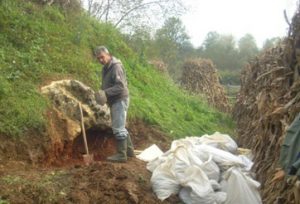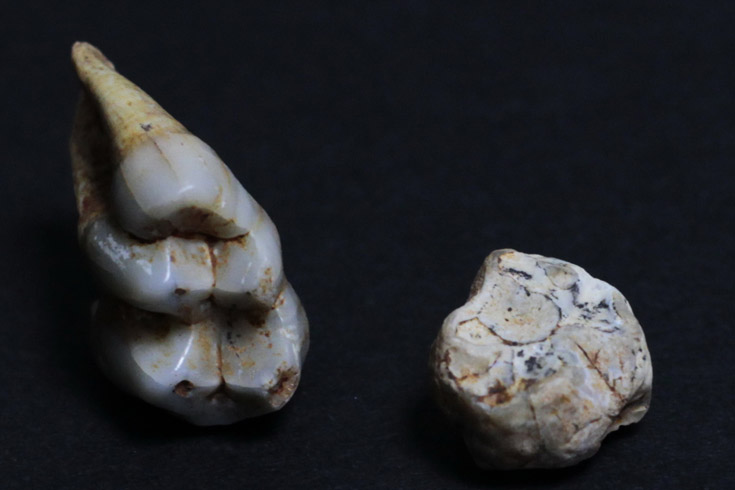Anthropologists from The University of Winnipeg were part of a study identifying the first monkey fossils found in Serbia after two molar teeth were discovered during the excavations of a rich palaeontological site in the village of Ridjake, in the Vladimirci Municipality of western Serbia.
The results of a detailed analysis of the fossils have just been published in the Journal of Human Evolution, one of the leading academic journals in the field of human and primate evolution.
The international research team includes Predrag Radović, from the National Museum, Kraljevo, Serbia; Joshua Lindal, UWinnipeg research assistant and PhD student at the University of Manitoba; Zoran Marković and Sanja Alaburić from the Natural History Museum in Belgrade; and Dr. Mirjana Roksandic, UWinnipeg anthropology professor.
“Until now, humans were the only kind of primate that had been found in Serbia,” said Lindal.

Senior geological conservator Miloš Milivojević (Natural History Museum in Belgrade) at the excavation site in the village of Ridjake, in Serbia (photo supplied).
According to Radović, the teeth have characteristics that are similar to those of baboons and macaques, but they are relatively large. The team has attributed them to Paradolichopithecus, a baboon-like monkey found in Europe and Asia that went extinct during the Ice Ages of the Pleistocene period.
“Paradolichopithecus was a big monkey, much larger than its closest relatives, the macaques,” Radović explained. “It’s the only monkey known from the Balkans that had teeth this large”.
However, the team was not able to identify which of the four species of Paradolichopithecus the teeth belonged to, or if they represent a new species.
“These monkeys all had very similar teeth, so more fossil material is needed before we can identify the exact species” said Radović.
“This is the first fossil monkey found Serbia, but monkeys were actually quite common in Europe and Asia in the past” said Lindal, noting that Paradolichopithecus fossils have been found in Spain, France, Greece, Romania, Tajikistan, and China.
“Ridjake is one of the richest fossil mammal sites in southeastern Europe.” said Marković, who excavated the site.
The remains of these primates were found among thousands of fossils bones and teeth excavated during three field campaigns. Based on the different types of animal bones present, the researchers determined that the site originated in the Late Pliocene period, between two-and-a-half and three million years ago.
“The climate of Europe was warmer and more humid in the Pliocene than it is today” said Alaburić.

UWinnipeg anthropology professor Dr. Mirjana Roksandic, and research assistant Josh Lindal. ©UWinnipeg
But the climate shifted dramatically when the Pliocene ended, and the Pleistocene period brought on a series of Ice Ages – this is the environment the earliest human relatives encountered when they left Africa for the first time.
“This is very exciting” says Roksandic. “Paradolichopithecus fossils in Greece are contemporaneous with the earliest hominin fossils outside of Africa, and Ridjake is only a little older. The site can help us understand more about the changing climate in Europe at the time of the earliest human migrations out of Africa, almost 2.5 million years ago.”
The team has already been responsible for finding the oldest human remains in Serbia: a 100,000-year-old Neanderthal tooth from Pesturina Cave, and a 500,000-year-old jawbone of Homo heidelbergensis from Mala Balanica Cave.
“This team has been re-writing our understanding of the primate fossil record in the Balkans, which is proving to be a key area for understanding the movement of animals (including humans) in the Plio-Pleistocene,” said Mary Silcox, paleoprimatologist from the University of Toronto, who was not involved in the study. “It is wonderful to think that there were monkeys in Serbia only a few million years ago. This find definitely emphasizes the need for additional work in this part of the world.”

